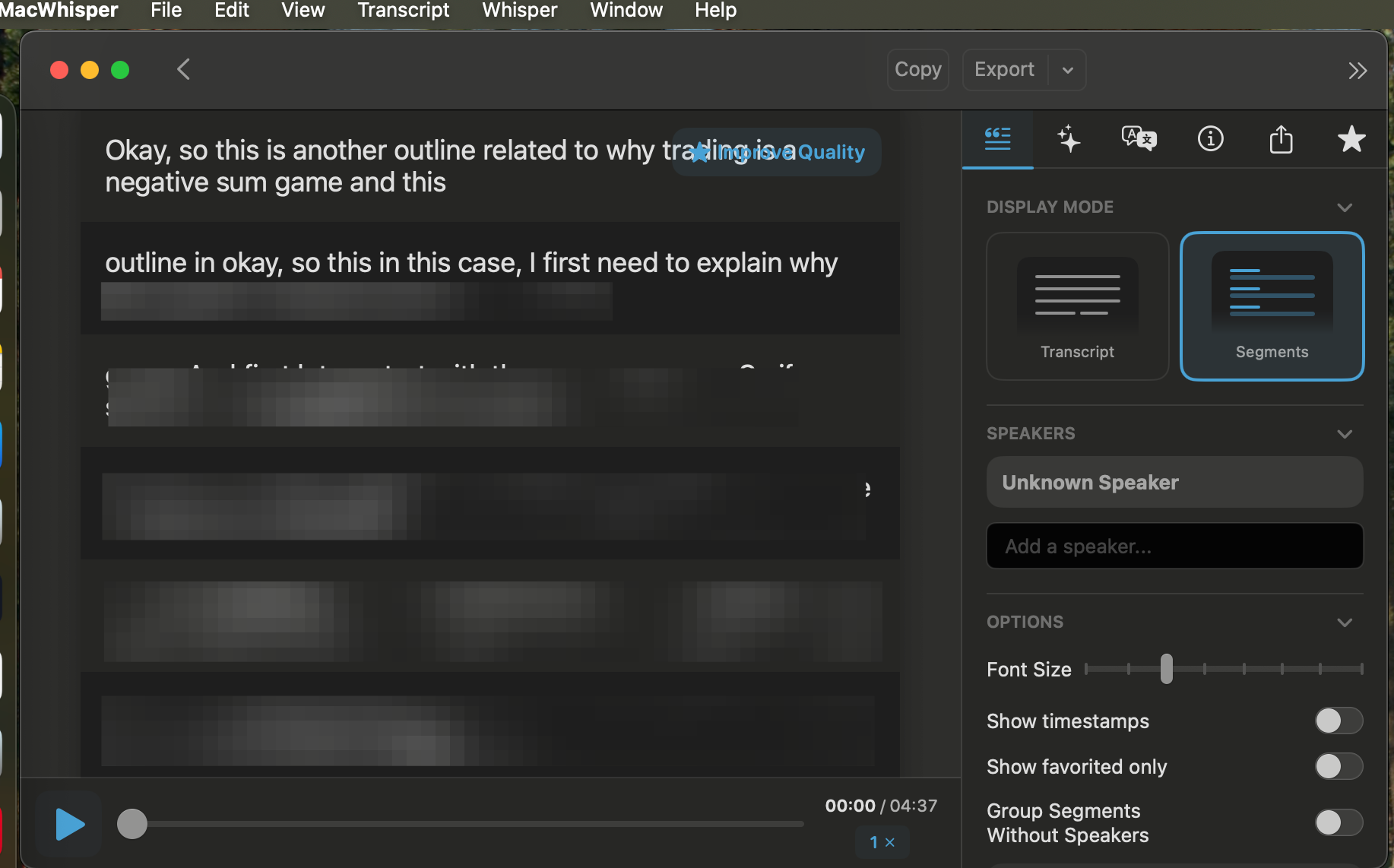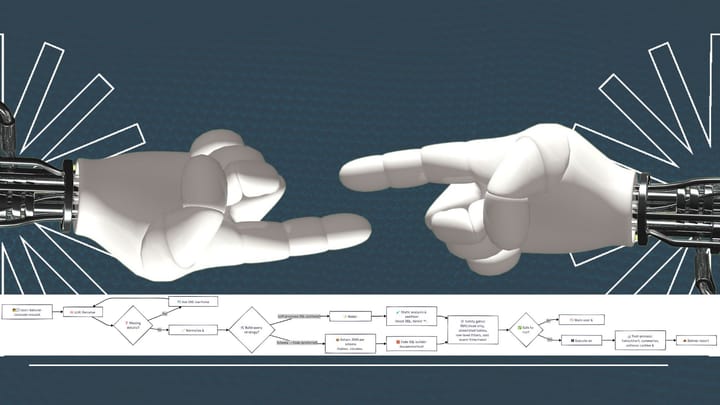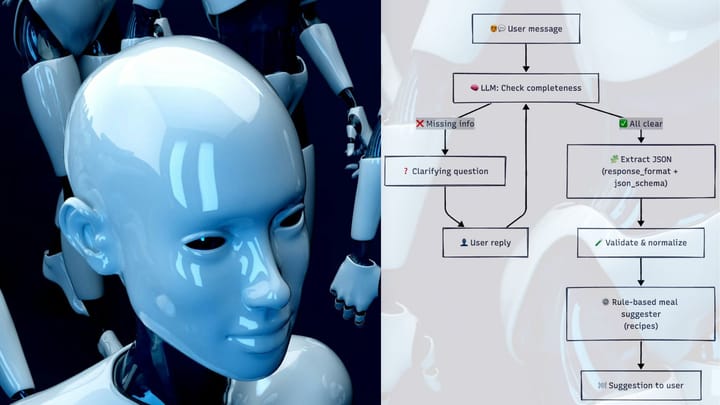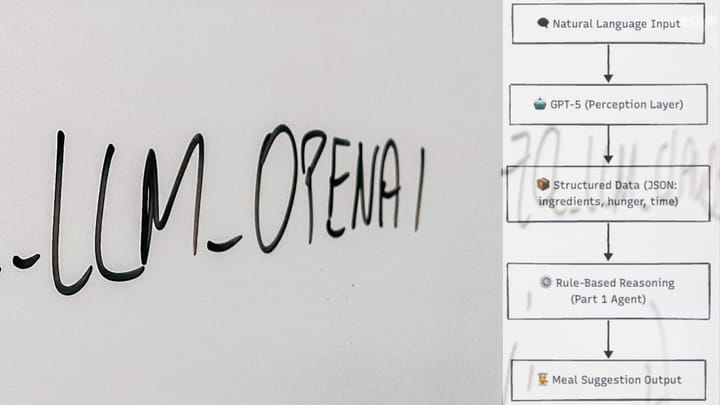Write Faster with AI - While Keeping It Yours
Write faster with AI while preserving your unique style. A creator’s step-by-step workflow that works.

Here is how I manage my writing workflow to achieve consistency and create content quickly with AI, all while preserving your unique style and avoiding AI slop.
Write down your idea.
When I have an idea, I jot it down in my notes. Mobile first or directly to Trello. But it ultimately lands in the Trello dashboard in the Pending list. It is usually a one-liner, and there may be some pointers in there in case I forget the context later.
I use Trello to manage all my work, but you could be using any tool.
The most important part is to write down the idea; otherwise, other ideas might overshadow it, and you will forget about it. And don't worry if these lists become huge over time - they will, and that is completely normal.
Preparing the outline
Get the thoughts out.
If you think the idea will get lost, take the note and prepare an outline soon.
DO NOT ask AI to write an outline for you.
- You want to keep it yours.
I don't write the outlines now - I speak them out on a mic/recorder. That is easier and preserves the energy for my eyes to get strained during the writing process. My outlines are typically 20-30 minutes long, outlining action points for myself, what needs to be covered, and the necessary checks. The good part is I can speak here without restrictions - it's just an outline for myself.

I use Audacity to record the outlines. This allows me to take a break, rearrange segments, or edit and remove unnecessary stuff while I am in the flow.
For example, if I spoke about something for too long and later thought it could be shortened, I would remove it and add new content. Sometimes, I end up recording about a topic that can be divided into 2-3 outlines, and therefore, multiple audio files are created after finishing the outline.
DO NOT interrupt yourself too much while outlining - it is not supposed to be structured - go with the flow. You can structure it later.
Also, place pointers and action points in the audio. This comes with practice and is better understood if you use this workflow.
You don't have to use Audacity; you could also use your mobile to record. The key is to capture your thoughts when they are fresh.
Sometimes, when I am well-rested and hyperactive, I can complete 4-5 audio outlines in 2-3 hours. Other times, I am probably creating 2-3 audio outlines in a week. It all depends on how inspired I have been.
The goal in this step is to capture the content-idea in a notepad or on audio; it doesn't matter whether the idea is good. Do not evaluate the idea here. It could be sloppy crap and not realized at that time, but the best ideas can die because of over-engineering or early analysis.
Add the task to the pipeline.
I don't start working on these outlines immediately, but they become a part of the pipeline.
Remember the Trello task I created? Once the outline is created, I move it to Completed and create another task to process the outline.
My Trello workflow serves not only to track tasks but also to keep me accountable, stay consistent, and motivated. Maybe I will write about it in future posts.
Usually, there will be a lot more outlines in the pipeline compared to what end up becoming posts.
This post remained in the pending list for over 90 days after I created the outline. The reason was that the website was outdated and hadn't been migrated to Ghost Pro, and I was also working on another project that was recently merged here.
Building the First-Draft
Selecting what you want to write about
Sometimes, usually a few days later, I'll realize that a few outlines don't hold any value - "this is crap," I'll say. "Next one". I pick up three top-priority outlines and move them up in my Trello Priority-1 list.
Scheduling a time to write
For consistency, I have a specific deep work time of at least 4 hours, allotted for writing these posts. But if I am inspired, I'll do it outside those hours too. To prevent burnout while staying consistent, I set a minimal expectation per week. On the longer posts, my goal is to complete 80% of the work during those deep-work hours. The other hours are just a bonus for wrapping up things.
The Real Work begins with AI.
I take the audio file, and the first part is to turn the speech into text. I use MacWhisper, which does a fair enough job for me.

If you don't want to or cannot use MacWhisper, you can use NotebookLM too.
The text goes to ChatGPT along with specific prompts. I then prompt it to write the first draft. The result is a well-structured post written by ChatGPT, but it is still AI.

NotebookLM summary
The audio file also goes into NotebookLM. It summarizes the article.
Again, I have a prompt written to take out the action points from the audio files and the fact checks that I need to do.
Over time, I have started recording those action points in the audio, so it's easier for NotebookLM to point out things for me. I also prompt NotebookLM to write the post for me, but it is considered a secondary reference.
Why use both ChatGPT and NotebookLM
I want the post to be centered around my outline. ChatGPT is notorious for bringing in its ideas, which are sometimes outright incorrect, conflicting, or diluting. On the other hand, NotebookLM focuses on your content exclusively and does not add too much from outside. They feel like two different personalities.
So, now I have three resources:
- My original outline - audio (or text)
- ChatGPT's first draft
- NotebookLM's first draft and summary.
If it has been very long, I may go through my original outline first.
Step 1: Read the ChatGPT-written post for correctness. Every word counts. ChatGPT is notorious for incorporating its opinions or generic views and writing excessively. I cut down lines here. Everything the post says has to resonate with my views - I make sure of that. The canvas feature is helpful here.
Step 2: Ask ChatGPT to refine the post strictly based on what is written. Sometimes I do it one paragraph at a time. This is the first version of the post that is acceptable to me.
Step 3: Compare the post with what NotebookLM has written and look for missing action points. NotebookLM will stick to your outline and does not impose its opinions. This verification helps ensure that the post matches your style and catches any missing points.
Step 4: Add any missing points and refine the post again with ChatGPT only.
Step 5: Re-read, take a break, re-read, and finalize the second version. In my case, this process takes longer than expected because I frequently switch between Steps 4 and 5 to add any missing information.
Step 6: Grammarly checks and rewrites. This typically takes two iterations to complete the post. As a non-native English speaker, I sometimes struggle to find the right words to convey my message, or I write too much, which is why I need Grammarly.
Step 7: Optionally, listen to the original outline. I typically do not need to do this if it is based on recent experience.
Step 8: Get the SEO details right, including title, meta-description, slug, tags, and excerpt. I use ChatGPT to generate meta descriptions and then edit them to my liking. The same goes for the slug and titles. It doesn't take long, but it always requires a few iterations of brainstorming with AI.
Step 9: Publish or, optionally, sleep on it and review again the next day. Try to get over the urge to publish immediately.
This entire process can take 2-4 hours, depending on the length of the post.
Prevent AI influence on your tone.
"What?" - you might think. But whatever AI generates can influence you subtly over time, and in this case, you are reading it over and over again. It could say "It looks more casual" or "it feels formal", or like Grammarly always wants to "make it more concise". These tools are not always correct.
If you do not instantly like what AI has written, even a slight doubt - scratch it immediately. Do not let it influence your tone. Ask it to rephrase again or use your own words.
It is better to finish the entire post first, up to Step 5, and then do the refinements, rephrasing, or polishing.
⚠️ Reverse feedback and style drift.
I've noticed that after working with ChatGPT's initial drafts for some time, my writing style has begun to mirror its tone and structure. Multiple iterations of manually verifying, fixing, and refining the content lead to this subtle drift. This is repetitive reinforcement happening the other way round.
The technical term for this is Language Convergence, and it's common.
Not all posts are written this way.
There are times when I will open up the editor and start writing, just like the old days. However, that happens only 20-30% of the time and takes much longer to finish. But that also helps stay away from the drift for a while.
Post publish workflow
(Not the best one)
I do not have a specific post-publishing workflow other than a small checklist I follow, which includes checking the post for any problems and sharing the articles.
Creating an Audio and Video
Once the post is done, I create another NotebookLM project, feed the published post (webpage), and ask it to create an Audio Overview with customized prompts. That is a potential podcast for YouTube. It is possible that I may not like the podcast, but if I do, it ends up in the video pipeline. Not all posts will end up in podcasts, and some may require a different type of audio.
I then use this NotebookLM-generated audio overview to create a video for YouTube. I admit I am not a skilled video creator and recently learned video editing. I disliked it at first, and still cringe at it — but the times demand it. And I'm pretty sure others would be able to do a better job with the audio.
An example of the video created
Source post: https://www.anupshinde.com/the-accuracy-trap/
Final thoughts...
AI can boost your writing productivity significantly, but it does not take away the effort completely. Do not let AI influence your idea and be aware of the style drifts or language convergence that happen over time.




Comments ()